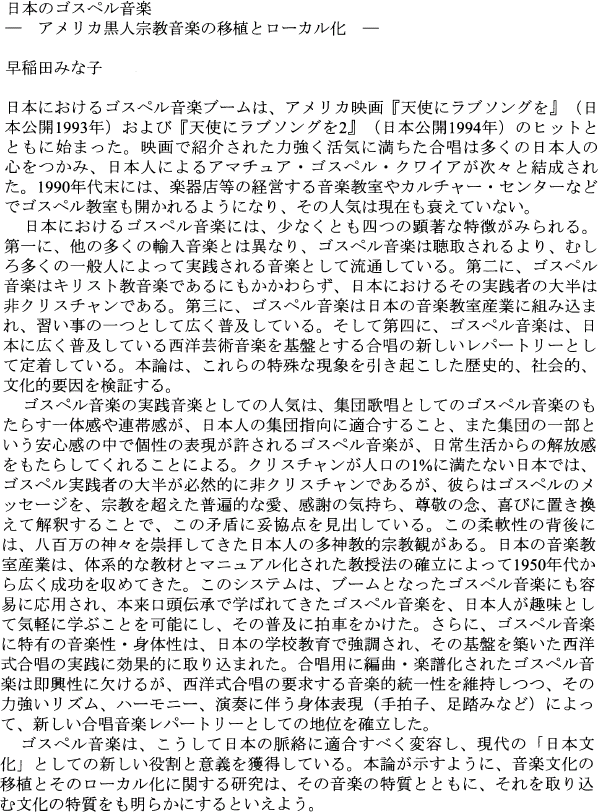Published online by Cambridge University Press: 06 December 2018
Gospel music is a type of Protestant Christian music in both white and black American traditions. White gospel or European American gospel music dates back to the late-nineteenth-century revival movement and has developed within three identifiable traditions: northern urban gospel, southern gospel, and country and bluegrass gospel. Black gospel or African American gospel music emerged in the 1930s in northern industrial cities, drawing on spirituals, jubilee singing, the blues, and hymnody from various traditions, then developed and flourished throughout North America. Today the influence of gospel music, particularly from the African American and northern urban white traditions, extends across many cultures (Shearon et al. 2012). In Japan, African American gospel music has become very popular since the early 1990s, and its popularity continues to the present day. This paper examines the way that African American gospel music took root and was localized in Japan in its social, cultural, and historical contexts.
